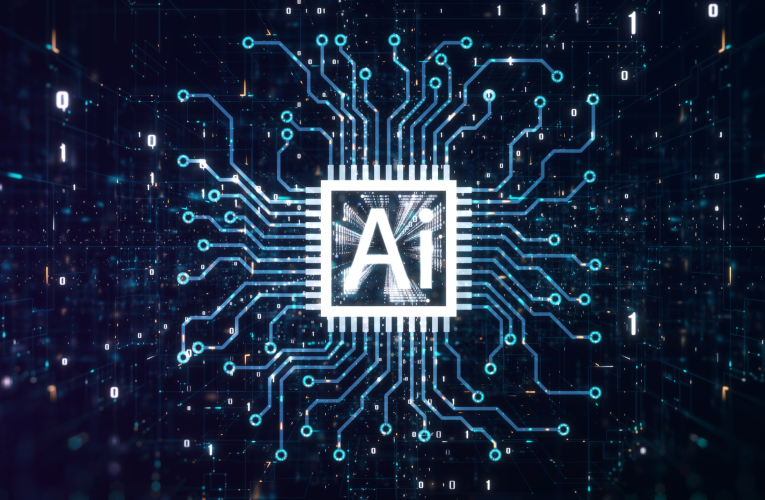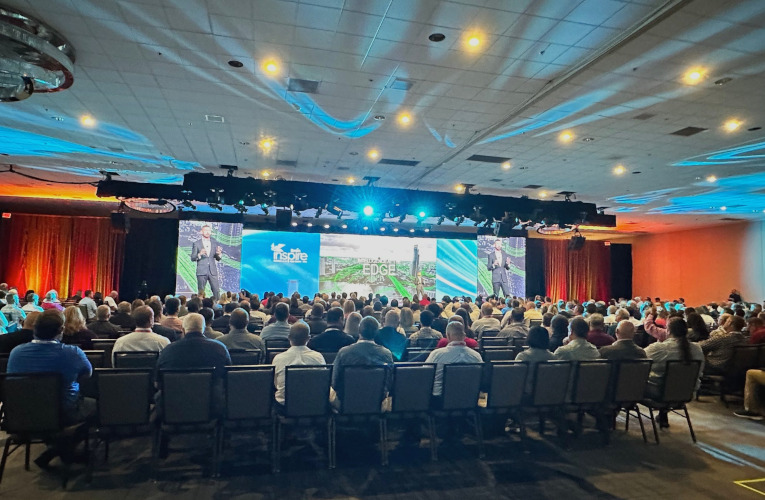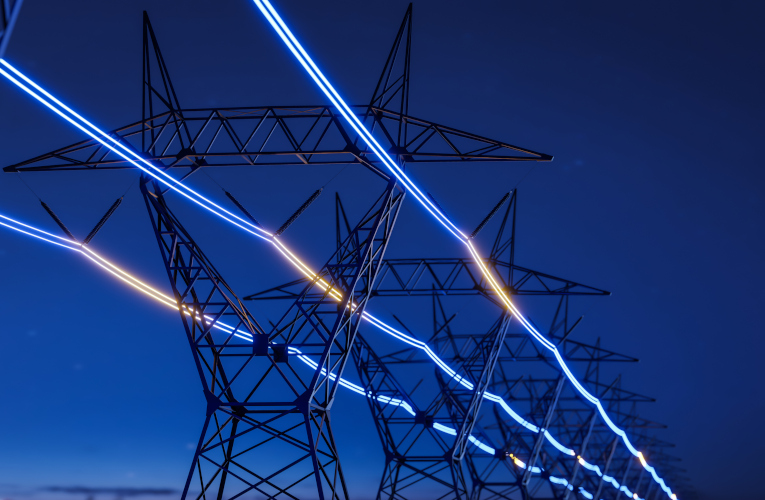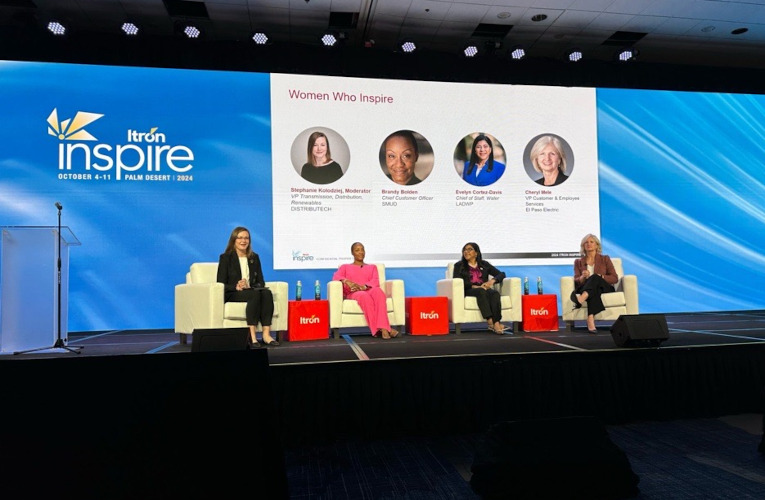
Industry Insights, Itron Inspire
The Challenges and Opportunities of AI: LinkedIn Live Recap
Are artificial intelligence (AI) and machine learning (ML) the future of utility operations? This question is top of mind for utilities worldwide. To find out, we surveyed hundreds of utility executives from six countries to understand the trends and expectations around AI and ML in utility operations. At Itron Inspire 2024, Marina Donovan, Itron’s vice president of global marketing, ESG and public affairs, shared key takeaways from this research along with highlights from our newly released 2024 Resourcefulness Insight Report, Exploring AI for Utilities: The Promise and Challenges of Artificial Intelligence.
Marina sat down with Paul Gerke, content director at Clarion Events, for a LinkedIn Live at Itron Inspire to dive deeper into the report findings. If you couldn’t tune in, watch the recording here and read a brief overview of their insightful conversation below.
Paul: Let’s get right to it—what are the main takeaways from the report?
Marina: We asked utility executives about their biggest challenges today and what they anticipate in five years. Interestingly, the top challenges stayed the same. The number one concern is the rising demand for electricity followed by the need to enhance safety systems. Another challenge is preparation for renewable integration into the grid. Looking ahead, both consumer engagement and workforce development emerged as top priorities for the future.
In addition, one finding that stands out is the dual role of AI, acting as part of the challenge and a transformative solution. When asked about the drivers behind the rising demand, respondents cited data centers powered by AI and cloud computing. While it’s contributing to the increasing demand, utilities also see it as a solution; 86% of respondents said they see AI and ML as either extremely important or very important to their operations.
Paul: How did this year’s survey methodology change from previous reports?
Marina: In previous years, survey respondents were primarily from U.S. utilities. This year, we broadened the scope to include 600 gas and electricity utility executives from six countries: the U.S., Canada, the UK, France, India, and Australia. This global perspective brings unique insights to this year’s report. While there are some country-specific anomalies, the overarching trends highlight shared challenges and opportunities.
Paul: What are some of the AI benefits utilities see, especially in the early stages?
Marina: The top area where AI can make an immediate impact is in enhancing safety. With extreme weather, aging infrastructure, cyber threats, etc., AI enables utilities to proactively address these challenges. AI also supports predictive maintenance, such as monitoring gas pipe pressure or detecting water leaks. In New York, we work with ConEd and a partner to ensure methane detection, maximizing infrastructure lifespan and prioritizing public safety.
AI also plays a crucial role in grid reliability and outage management, helping utilities maintain service amid the increasing integration of electric vehicles and solar. By improving load forecasting and providing real-time visibility on the consumer side, AI empowers utilities to manage the complexities of the modern electricity grid.
Paul: We’ve talked quite a bit about early adoption use cases. When you think about the possibilities for the future, where do you think this could lead?
Marina: Consumers need to have more of a relationship with their utility. I live in California, and we have heat waves, wildfires, more solar, the most EVs in the country, etc., and these things require you to be more engaged with your utility. Before, I wouldn’t look at my utility bill in detail unless it was super high. Now, we all must work together.
Paul: This year’s survey was expansive. Did any of the findings surprise you?
Marina: We asked utilities about their progress with AI and ML. Surprisingly, 22% of respondents reported they already have mature applications in the field, and another 60% have plans in their roadmap. Just three years ago, we weren’t even having this conversation, which makes the rapid rate of innovation even more exciting.
Paul: Any last words for our viewers?
Marina: There’s never been a more exciting time to work in the utility industry. This is the field for anyone who wants to do important work that matters to our society. What I love most about our industry is that we’re here to serve communities and improve quality of life. I also value the strong sense of collaboration; we aren’t competitors, but a community of people working together and sharing insights to drive positive change.
Stay tuned for a recap blog of our second Itron Inspire LinkedIn Live, featuring Todd Inlander, senior vice president and chief information officer of Southern California Edison (SCE), about SCE’s greatest challenges and opportunities in creating a future-ready grid.
Related Articles
HTML Example
A paragraph is a self-contained unit of a discourse in writing dealing with a particular point or idea. Paragraphs are usually an expected part of formal writing, used to organize longer prose.





